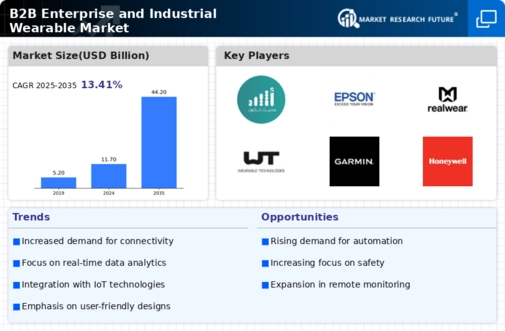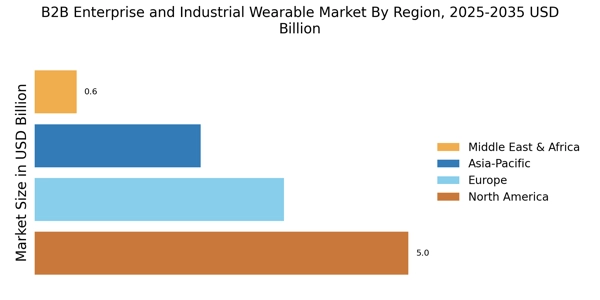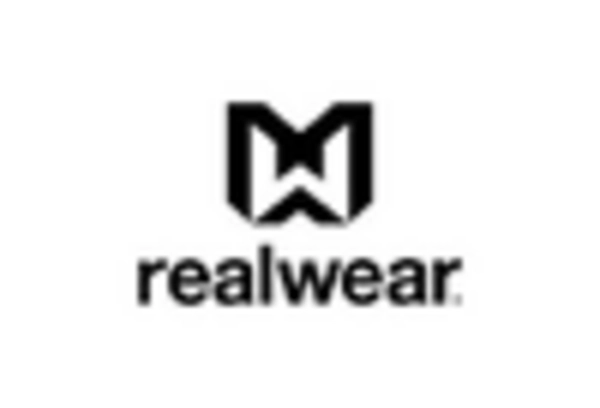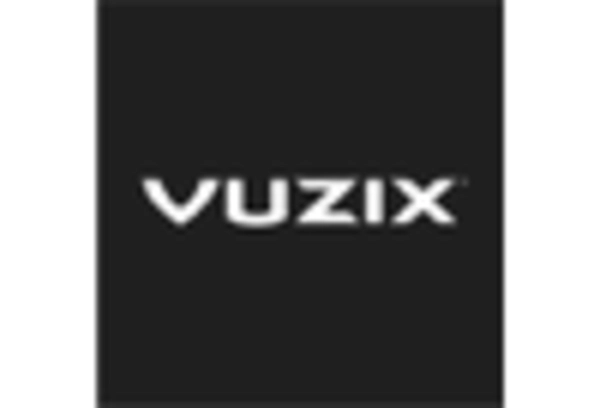Advancements in Technology
The B2B Enterprise and Industrial Wearable Market is experiencing rapid advancements in technology, particularly in areas such as augmented reality (AR) and artificial intelligence (AI). These technologies enhance the functionality of wearables, enabling real-time data analysis and improved decision-making processes. For instance, wearables equipped with AR capabilities allow workers to visualize complex data overlays in their field of view, thereby increasing efficiency and reducing errors. The integration of AI algorithms further personalizes user experiences, adapting to individual needs and preferences. As a result, the market is projected to grow significantly, with estimates suggesting a compound annual growth rate (CAGR) of over 20% in the coming years.
Focus on Workforce Productivity
In the B2B Enterprise and Industrial Wearable Market, there is a pronounced focus on enhancing workforce productivity. Wearables are increasingly being utilized to streamline operations, reduce downtime, and improve overall efficiency. By providing workers with instant access to information and communication tools, these devices facilitate quicker decision-making and task execution. Companies are recognizing the potential return on investment (ROI) associated with deploying wearables, as studies suggest that productivity gains can exceed 30% in certain sectors. This emphasis on productivity is likely to drive further adoption of wearables across various industries, contributing to the market's robust growth.
Increased Demand for Remote Monitoring
The B2B Enterprise and Industrial Wearable Market is witnessing a surge in demand for remote monitoring solutions. Companies are increasingly adopting wearables that facilitate real-time health and performance monitoring of employees, particularly in hazardous environments. This trend is driven by the need to enhance worker safety and productivity. For example, wearables that monitor vital signs can alert supervisors to potential health issues before they escalate, thereby reducing workplace accidents. Market data indicates that the remote monitoring segment is expected to account for a substantial share of the overall market, with projections indicating a growth rate of approximately 15% annually.
Integration with Supply Chain Management
The B2B Enterprise and Industrial Wearable Market is increasingly integrating with supply chain management systems. Wearables that provide real-time tracking and inventory management capabilities are becoming vital tools for businesses aiming to optimize their supply chains. By enabling workers to access critical information on-the-go, these devices enhance operational efficiency and reduce delays. The integration of wearables with existing supply chain technologies is expected to create synergies that improve overall performance. Market analysis suggests that this integration could lead to a 20% reduction in operational costs for companies that effectively implement wearable technology within their supply chains.
Regulatory Compliance and Safety Standards
The B2B Enterprise and Industrial Wearable Market is significantly influenced by regulatory compliance and safety standards. As industries face increasing scrutiny regarding worker safety, the adoption of wearables that ensure compliance with safety regulations is becoming essential. Wearables equipped with features such as geofencing and environmental monitoring help organizations adhere to legal requirements while safeguarding employee well-being. The market is likely to see a rise in demand for such devices, as companies strive to mitigate risks and avoid penalties associated with non-compliance. This trend is expected to bolster the market, with estimates indicating a potential increase in market size by 25% over the next few years.


















Leave a Comment